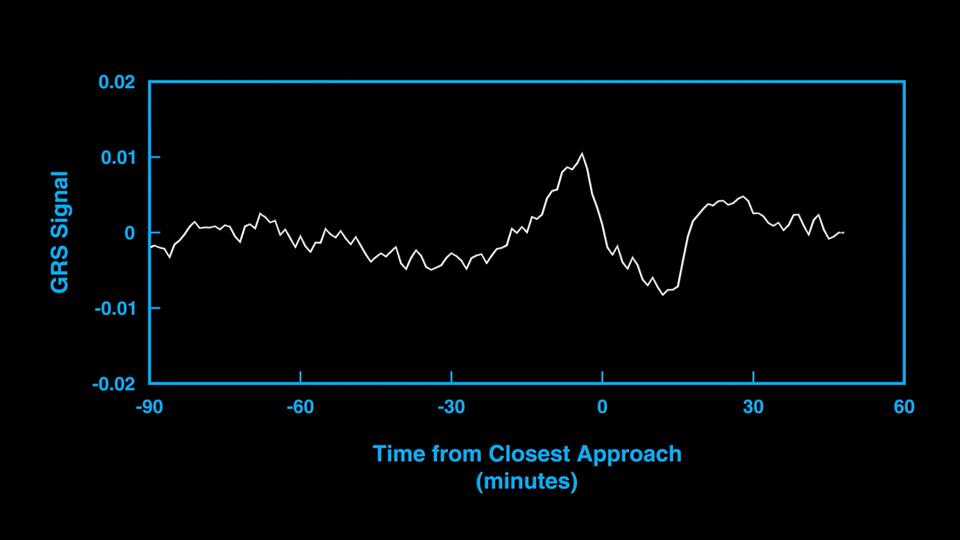
|
Great Red Spot Gravity
- Click the image above for a larger view
- Full-Res JPEG (960 x 540) (30.9 kB)
- Full-Res TIFF (960 x 540) (130.6 kB)
Caption:
This animation and audio represent the subtle gravitational signal acquired by an antenna of NASA's Deep Space Network as the agency's Juno spacecraft performed a close flyby of Jupiter's Great Red Spot in July 2019. The changes in the signal frequency represent the changes in the local gravity as the spacecraft flew low overhead.
Juno flew twice over the Great Red Spot in 2019, with the goal of picking up the subtle gravitational signal of the vortex. The concentration of mass caused by the powerful winds surrounding the Great Red Spot minutely change the spacecraft's velocity, inducing a Doppler shift on the radio signals relayed back to Earth.
Background Info:
More information about Juno is at https://www.nasa.gov/juno and https://missionjuno.swri.edu .
Cataloging Keywords:
| Name | Value | Additional Values |
|---|---|---|
| Target | Jupiter | |
| System | Jupiter | |
| Target Type | Planet | |
| Mission | Deep Space Network (DSN) | Juno |
| Instrument Host | Goldstone Deep Space Communications Complex (GDSCC) | Juno |
| Host Type | Ground-Based Observatory | Orbiter |
| Instrument | Goldstone Solar System Radar | |
| Detector | ||
| Extra Keywords | Atmosphere, Color, Radio, Storm | |
| Acquisition Date | ||
| Release Date | 2021-10-28 | |
| Date in Caption | ||
| Image Credit | NASA/JPL-Caltech | |
| Source | photojournal.jpl.nasa.gov/catalog/PIA24963 | |
| Identifier | PIA24963 | |
